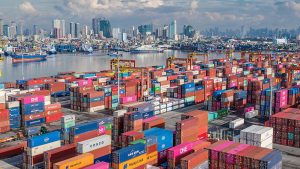by Edg Adrian A. Eva, Reporter
Bamboo, a known sustainable construction material, should be incorporated into the National Building Code (NBC) of the Philippines for mainstream use, a civil engineer and bamboo advocate said.
Engr. Luis Felipe Lopez, general manager of BASE Foundation Inc., told BusinessWorld that the usage of bamboo in construction would address key issues like housing shortage and climate change.
Since 2014, BASE has been conducting research and development on alternative building technologies, such as bamboo, exploring its potential for mainstream construction.
Mr. Lopez said that bamboo lowers housing costs by 30% compared to the current standard housing costs.
This sustainable approach is ideal for social housing projects, helping address the country’s backlog of 6.5 million housing units, according to the UN-Habitat Philippines Country Report in 2023.
Houses made with Base Bahay technology also produce fewer carbon emissions, as climate change-contributing materials such as concrete, steel, and aluminum are reduced exponentially, Mr. Lopez said.
photo by Edg Adrian A. Eva, BusinessWorld
“Imagine if all the housing or social housing projects in the Philippines switched to a technology like ours; you would see a 70% reduction in carbon emissions in the project,” Mr. Lopez furthered.
BASE has been advocating for the inclusion of bamboo in the NBC for the past five years, in collaboration with various organizations such as the Structural Engineers of the Philippines and Bukidnon Rep. Jose Manuel F. Alba.
In February 2024, Mr. Alba filed House Bill 9144, or the “Act Integrating Bamboo as a Sustainable Material for the Built Environment.”
The bill seeks to enable the mainstream adoption of bamboo in construction, including its use in high-rise structures.
“If this bill becomes law, it will pave the way for the establishment of a bamboo structure code and a bamboo architectural code, which will be included in our National Building Code,” Mr. Alba told reporters during the Department of Science and Technology press conference in November.
“We can now introduce engineered bamboos as columns, beams, and for constructing our buildings. Malaki ang impact nito sa construction industry natin [this will have a significant impact on our construction industry],” Mr. Alba added.
Skepticism
Bamboo in Filipino construction has existed since the pre-colonial period, largely due to its abundance across the islands and its ease of setup.
However, this very familiarity has also led to lingering skepticism, with many still reluctant to consider bamboo as a construction material for commercial infrastructures, Mr. Lopez said.
photo by Edg Adrian A. Eva, BusinessWorld
BASE Bahay Foundation Inc. aims to outgrow the stigma through years of research and development.
“What we want to do at BASE is, through research, publications, and scientific information. We want to prove that bamboo is a strong material that, if treated properly, can last for 50 to 60 years,” Mr. Lopez said.
On January 30, members of the press visited one of BASE’s treatment facilities adopted by Kanya Kawayan, an independent social enterprise in Nasugbu, Batangas.
Kanya Kawayan produces 1,100 treated bamboo poles per month, along with flattened bamboo poles, locally known as “tad-tad,” which are used as inner walling for housing projects.
Paulo Ferrer, director of business and strategic development at BASE, told reporters that construction-grade bamboo in Kanya Kawayan undergoes a nine-step treatment process to meet industry standards.
Mr. Ferrer also said that BASE’s housing projects, which utilize treated bamboos, are designed to be insect-resistant, fire-resistant with a two-hour fire rating, and capable of withstanding category 5 typhoon.
Just a few kilometers from the facility, members of the press visited an ongoing housing project in the “drying-in” phase, set to benefit 42 families in nearby communities.
This project adds to the more than 2,500 houses BASE Bahay has constructed locally and internationally over the past decade, with plans to expand further into critical areas across the country in need of sustainable housing solutions.






